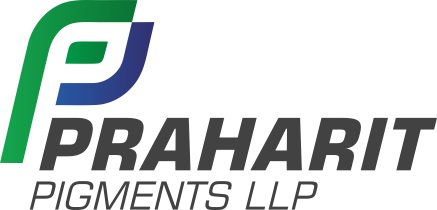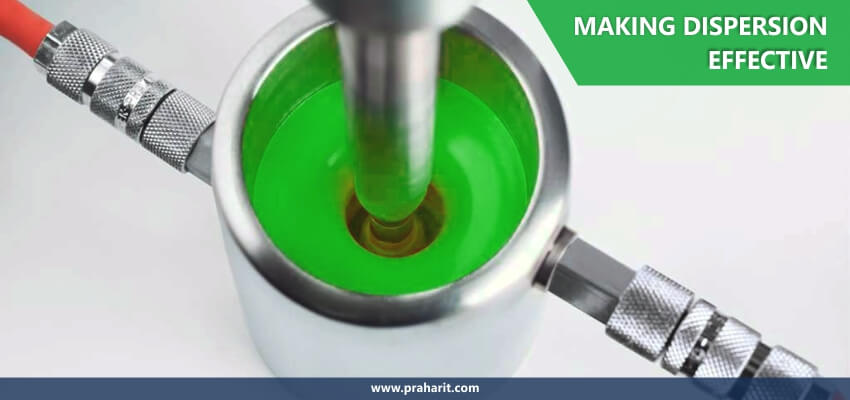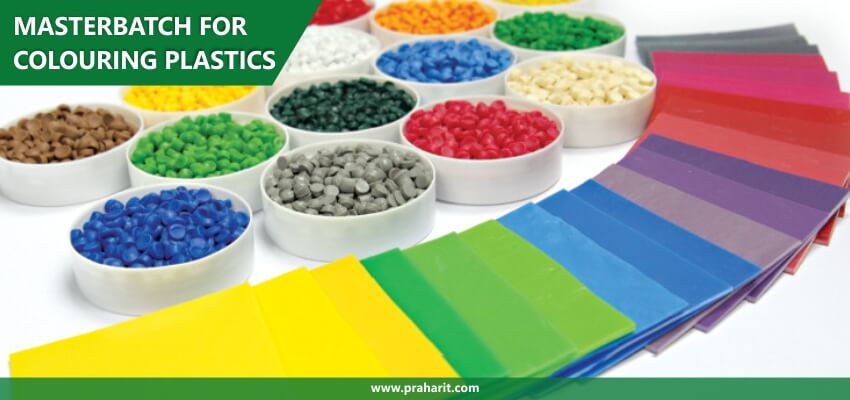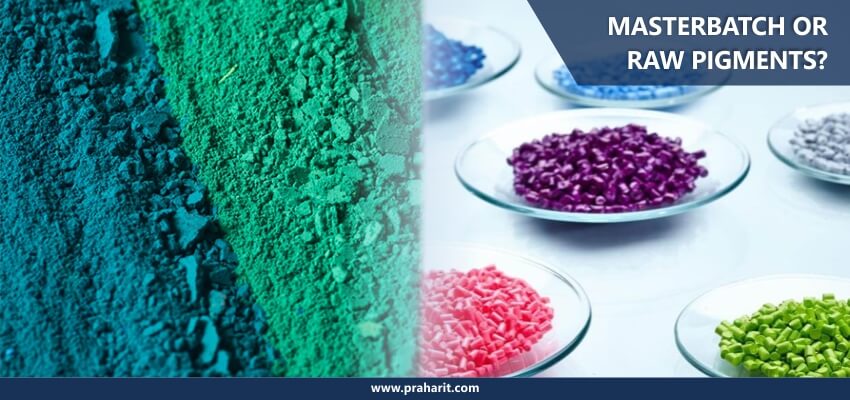Making Pigment Dispersion Effective: Steps To Be Considered
Date : 21-07-2020
Chemistry of Pigments for Dispersion
Pigments are designed and produced to be insoluble particles used to impart color in a variety of materials. They can be classified as the organic, inorganic, effect, and functional. The diverse range of pigment chemistries, the end-use requirements, and the broad range of colors available create a challenge for chemists in selecting the optimal pigment or additive for a given application. Proper pigment and additive selection is critical in determining the performance of the finished coating as well as the production efficiency. Understanding the various pigment types, properties, and chemical families will help the formulator in determining the most effective pigment chemistry and manufacturing processing, thus avoiding potential problems with the final coating and application. This paper focuses on pigment families and their application in waterborne, solvent-borne, and universal dispersions. The theory behind processing, selection of wetting and dispersing agents, and the differences between co-grinding and single pigment dispersion are discussed.
Solubility Considerations: Pigments & Dyes
Pigments are inorganic or organic colorants that are virtually insoluble in the application medium, while dyes are colorants that are soluble in the application medium. Understanding this difference is the most important concept to help with the correct colorant choice. Dyes are organic molecules with a brighter undertone, higher transparency, and they generally demonstrate inferior fastness to UV exposure versus pigments. Organic pigments vary regarding their chemical structure and surface treatment; some can behave like a dye, losing their crystal structure when exposed to solubilizing conditions. This structural change will negatively impact the pigment's fastness properties. Choosing the correct pigment for the desired application should be the first step during the coatings formulation process to formulate a stable system. Formulators are advised to consult their pigment suppliers to obtain the appropriate pigment solubility information.
In addition to solubility, resistance to acids and alkalis, heat stability and weather fastness /lightfastness, should be considered to formulate a stable system that meets end-use requirements.
Figure 2 shows some important points to be considered during the initial formulating stage. The formulator should always keep in mind that the same pigment chemistry may not perform equally in all coatings systems.
Impurities in Pigment
Pigments with the same color index identification produced by different manufacturers or different manufacturing processes could potentially have different performance despite being coloristically similar. It is due to impurities, which can be the result of unreacted raw materials, by-products, inorganic salts, and contaminants in the water. These impurities may cause adverse effects on weatherfastness, dispersion stability, and solvent fastness.
To assure that pigments do not have excessive impurities, the pigment manufacturer should test for pH, conductivity, oil absorption, and viscosity in specific testing systems. They may even consider doing additional viscosity stability and dispersibility testing for certain pigments as needed. In addition to approving a pigment for color, coatings formulators should always verify the stability of the final coating in determining the proper pigment or pigments for a given system or application. Read more about Pigment Green 7
Factors Affecting Color Development
Pigment color development is dependent on five variables: dispersibility, energy input, process dwell time, system components, and pigment interactions. Paying proper attention to these variables will provide the highest probability of developing a stable formula.
Dispersibility
Pigments must be adequately wetted, de-agglomerated/dispersed and uniformly distributed and stabilized to achieve maximum color intensity, gloss, and hiding power. Stabilization of a pigment dispersion requires time and energy. Dispersed pigments have a strong tendency to return to their initial agglomerated state. Due to this strong tendency, proper selection of wetting and dispersing agents is critical in obtaining a stable formula. Surfactants or wetting additives are generally defined as amphiphilic chemistries with low molecular weight while dispersing additives are oligomers able to stabilize the pigments and avoid re-agglomeration.
Wetting
To properly wet a pigment, the air/solid interface needs to be replaced by a liquid/solid one. Therefore, the less air entrapped in the system, the more effective the wetting will be. It’s all about surface tension! For a liquid to wet a solid, its surface tension must be lower than the free surface energy of the solid. Therefore, liquids with low surface tension are more effective at wetting, and this is why wetting additives are so valuable to the formulator. They will reduce the surface tension and will adhere to the surface and coat the pigment to create an additive/liquid interface.
Deagglomeration
In this phase of the dispersion process, pigment agglomerates are separated into smaller aggregates and primary particles. The lower the surface tension of the vehicle in which the pigment is being incorporated, the lower the energy that will be needed to disperse the pigment. Deagglomeration is achieved through the use of mechanical energy developed by the use of high-speed dispersers and various types of grinding equipment. A Cowles blade fitted on the shaft of a high-speed mixer can be an efficient means of dispersing a pigment. In order to disperse the pigment to a nano-level, the use of 0.3-0.5 nm grinding media is recommended.
Stabilization
Due to the increased surface area of the solid particles during the deagglomeration/grinding stage, the pigments that are deagglomerated need to be stabilized in order to avoid issues such as flocculation, color shift, sedimentation and stability loss. The stabilization process takes place by incorporating dispersion additives, which achieve stabilization through the following mechanisms.
Electrostatic Stabilization
Used in water-based systems and mostly with inorganic pigments, additive molecules adhere to the pigment surface, through ionic bonding, hydrogen bonds, and/or dipole interaction and cause the particles to repel each other through electrostatic forces. Pigments with high conductivity may not be stabilized through electrostatic stabilization.Formulas, where the dispersion must be acidic due to the final application having a pH lower than 4, is recommended, and for alkaline dispersions a pH higher than 7.5 is good. The closer to zero the Zeta Potential is, the more prone re-agglomeration will be with WB dispersions. Dispersion agents accomplish electrostatic stabilization with cationic or anionic molecular groups, e.g., quaternary ammonia salts and alkylpolyamines (cationic) or polycarboxylic acids and sulfonated organic substances (anionic).
Steric Stabilization
Used in both water- and solvent-based systems, the additive anchoring groups, will adhere to the pigment surface. The compatibility of the system is dependent on the functional segments of the polymer that compose the hydrophobic portion. Regarding steric stabilization, the additive will physically reduce the mobility of the pigment particles and therefore avoid/minimize flocculation or re-agglomeration. This type of stabilization is accomplished mainly with nonionic dispersing agents.
Amount of Surfactant Selection
Too much or too little of a surfactant can be detrimental to the stability of pigment dispersion. The determination of the optimal level is based on the rule of 2-2.5 mg of polymeric dispersant needed per square meter of pigment surface (Figure 5). This rule must be applied initially, after which the formulator is advised to do a ladder study to determine the optimal level based on viscosity changes, the occurrence of flooding and floating, oven stability and freeze-thaw stability evaluations when necessary.
Dispersing Agent Selection
The recommended type of dispersant adhesion group depends on the pigment surface. The following suggestions may help formulators select the most effective dispersant chemistry for the pigment being evaluated.
- Organic pigments (aromatic surface treatment) - Dispersants containing phenyl or naphthyl groups are recommended.
- Inorganic pigments (oxides, sulfides, silicates, etc.) - Dispersants containing acidic groups, i.e, phosphate, carboxy, or sulfate are recommended.
- Carbon blacks (diazonium surface treatment) - Dispersants containing nitrogen.
Pigment Dispersibility
Pigment chemistries vary in texture, and the amount of energy required to achieve full-color development will differ from one to another. A good way to determine the pigment’s optimal dispersion time is by doing a dispersibility study in which the formulator will determine the time and energy needed to develop the pigment to its full strength by evaluating its coloristic properties. Figure 6 shows the dispersibility of selected Pigment Blue 15:2, Pigment Green 7, Pigment Yellow 74 and Pigment Yellow 65 pigments. These pigments were evaluated for strength and color in 30-minute intervals, where the dispersion made with 15 minutes of grind time was used as the standard. Pigments were ground beyond their optimal level which can be confirmed when a loss of color strength is observed. This type of evaluation is important in determining the optimal processing time for a pigment in a selected formulation. As can be seen in Figure 6, some pigments develop their strength and color faster than others. This is a key factor to consider when co-grinding pigments as it may not be possible to achieve optimum color development and consistency by this means. It is for this reason that single pigment dispersions are recommended as the best means of obtaining the full-color development value of a given pigment.
Infrastructure to manufacture Organic Phthalo Pigments
Conclusion
Pigments are a key component in a coating formulation and proper selection and dispersion is critical in determining the performance of the coating. In a recent study regarding the requests for technical assistance received over the past 2 years, it was noted that nearly 80% of the formulation issues were resolved by modifying or changing the pigments being used in the formula. It is a mistake to assume that all pigments will perform the same from one formula to another. This assumption could also prove to be costly with respect to the coating development and manufacturing process. The keys to achieving a stable coating with the optimum performance and value are proper pigment selection, proper additive selection, and the appropriate means to achieve complete dispersion. It is for this reason that we strongly suggest that formulators consult with their raw material and equipment suppliers to understand their options and potential issues better when formulating a coating.
Explore:
Pigments for Plastics | Pigments for Plastics HDPE LDPE PP | Pigments for PVC |pigments for paints | pigments for coatings | pigments for coil coatings | pigments for automotive coatings | pigments for industrial coatings | pigments for decorative coatings | pigments for seeds | pigments for cellulose | pigments for paper




